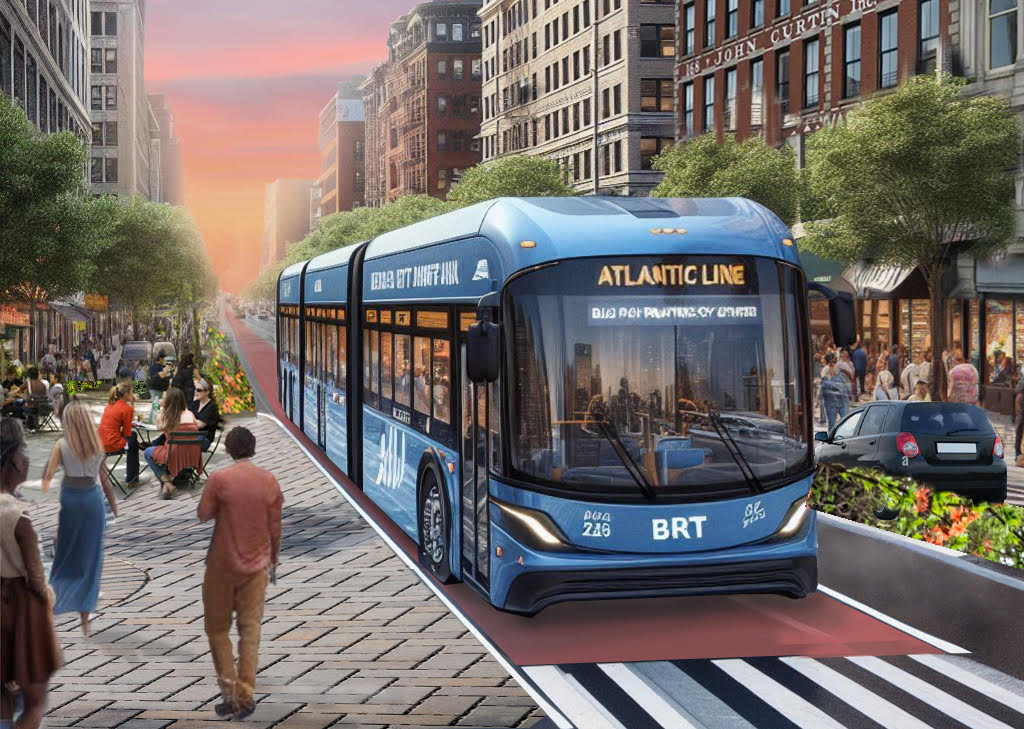
"An "Atlantic Line" like the one pictured above would form the spine of a pedestrian-priority boulevard, a place that people enjoy and value, not just pass through, linking new housing, retail, jobs and public spaces to the rest of the city. And as a transit corridor, the east-west Atlantic Avenue touches many of Brooklyn's most significant places, development opportunities, and underserved neighborhoods."
"The proposal has garnered wide-ranging support, but to my mind, it reinforces Flatbush as a "spoke" in the outdated "hub-and-spoke" model of urban infrastructure that is designed to get commuters to a city center only. Today, outer-borough connections are arguably more promising for developing neighborhoods where people can live, work, and play, with streets designed as valued public places, as well as for growth opportunities. We don't need more buses heading towards Manhattan, especially if the redesign doesn't provide room for bike or micro-transit."
Atlantic Avenue offers a superior corridor for bus rapid transit, forming a pedestrian-priority boulevard that links new housing, retail, jobs and public spaces. A single fast-moving east-west line, with a waterfront leg, would connect major destinations, development opportunities, and underserved neighborhoods across Brooklyn. Prioritizing Atlantic would shift investment toward outer-borough connections that support live-work-play neighborhoods and valued public streets. Flatbush Avenue, by contrast, primarily serves existing subway-rich corridors and reinforces a hub-and-spoke model oriented toward Manhattan. Atlantic’s poor current transit service constrains development, and a dedicated rapid line would produce transformative improvements to mobility and local growth.
Read at Streetsblog
Unable to calculate read time
Collection
[
|
...
]